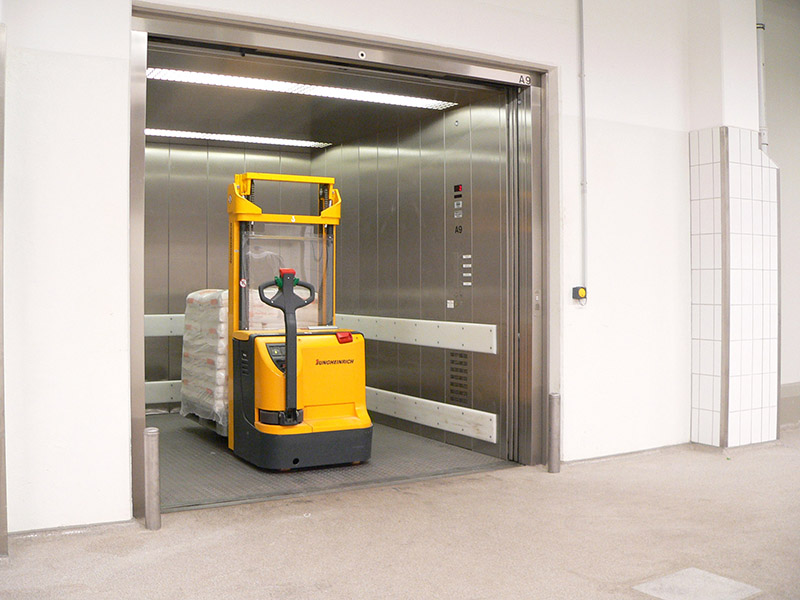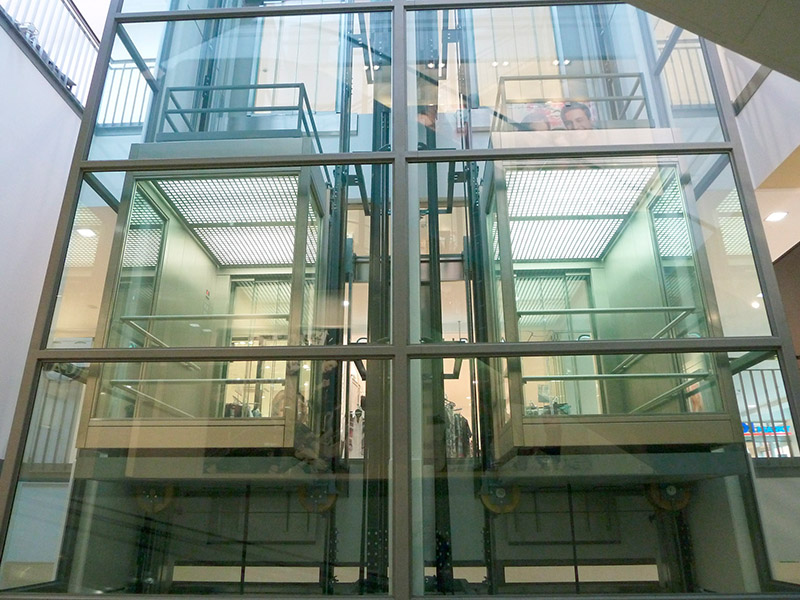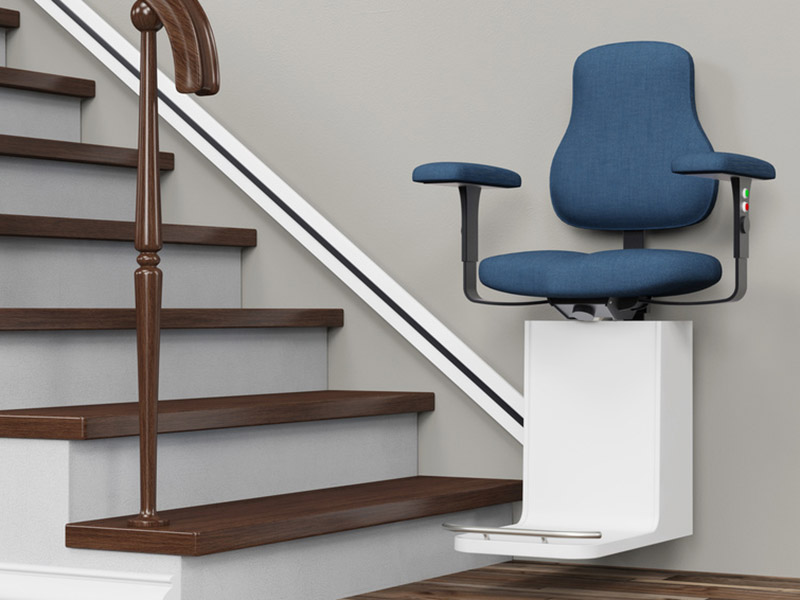Photo: © Kone

News | April 2024
Kone acquires Paca Ascenseurs
Assa Abloy has sold its lift maintenance business Paca ascenseur (Paca) in France to Kone. With this acquisition, Kone intends to strengthen its local presence in the region.

(Photo: © Osma-Aufzüge)
September 2019
Home lift, cargo lift, passenger lift, inclined lift or service lift? An expert explains the different lift types.
A lift for a private home – whether for single families, semi-detached or terrace houses – is permitted under the Machinery Directive and is suitable for attachment to the house or installation in the house. This is a lightweight car, for example with a belt drive, hydraulic units and spindles, which can reach three or four storeys.
Home lifts are very compact, energy-saving and affordable, but frequently still offer the option of customised equipment. These lifts for private homes are suitable for low conveyance demands.
 Cargo lifts must meet special requirements on functionality, sturdiness and durability and are for example used in production halls and warehouses or hotels and hospitals. Depending on use, special load-bearing capacities, drive types, car and door dimensions are in demand.
Cargo lifts must meet special requirements on functionality, sturdiness and durability and are for example used in production halls and warehouses or hotels and hospitals. Depending on use, special load-bearing capacities, drive types, car and door dimensions are in demand.
Depending on the conveyance height and desired speed, traction sheaves or hydraulic drives are more economic. Cargo lifts are designed with automatic sliding doors or manually-operated hinged doors.
Cargo lifts are an important element in trade and industry and – as the name itself says – serve the exclusive transport of goods. The design, floor area and transport capacity is very flexible in this regard. Loading can be one-sided or opposed through one- or multi-leaf hinged doors or vertical sliding doors. Operation is simple and the lift can be called or despatched from any stop and fitted for example with a location display.
Underfloor lifts are simplified cargo lifts with which cargo can be transported over one storey and take up relatively space, since the shaft disappears completely in the ground.
They have a small car floor area and are frequently used in restaurants to transport food and drink.
 Passenger lifts exist as rope lifts, hydraulic lifts or – relatively seldom – as winding-drum lift. Several providers work with a belt system that is supposed to provide superior travel comfort.
Passenger lifts exist as rope lifts, hydraulic lifts or – relatively seldom – as winding-drum lift. Several providers work with a belt system that is supposed to provide superior travel comfort.
Building owners can choose from a wide range of colours, materials, lighting, floors, doors and operating panels when it comes to design – there are almost no limits on taste. Passenger lifts can in principle also be designed without machine rooms. The drive is then installed in the shaft head.
Glass lifts are usually to be found in public buildings, like railway stations, hotels or department stores. Instead of a car with metal cladding, glass cladding is used. Apart from the optical advantages, this is also intended to prevent vandalism, since one can look into the car.
A disabled-friendly lift creates barrier-freedom in all kinds of buildings and is for example distinguished by the special arrangement and design of buttons. Disabled lifts are designed to permit people in wheelchairs to travel with other people as well.
The car sizes are fixed and also used for normal passenger lifts. Typical properties for disabled lifts are gentle acceleration, calm travel properties, precise stopping and lower positioning of the operating elements.
 Platform lifts can be attached to straight or inclined stairways ("inclined lift") and are collapsible. Lifting platforms, which are installed flush with the ground and can be extended not only vertically but also horizontally, can for example also reach a landing.
Platform lifts can be attached to straight or inclined stairways ("inclined lift") and are collapsible. Lifting platforms, which are installed flush with the ground and can be extended not only vertically but also horizontally, can for example also reach a landing.
Lifting platforms and lifting tables are also used in industrial sectors, such as production, distribution and warehousing. They serve the loading and unloading of trucks or lifting objects to working position.
Henrik Hesse
The author is a specialist planner for lifts and proprietor of the company "Aufzugsberatung Hesse" (Lift Consultancy Hesse).
Write a comment